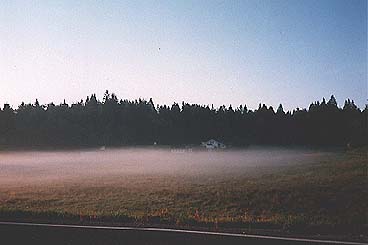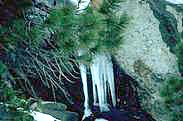 | Water Module |
|
|
 | Water Module |
|
|
|
Water Module Hydrologic Cycle and Watersheds |
Hydrologic CycleThe distribution of water over the continental land masses depends on the global hydrological cycle. This cycle involves the large amount of evaporation of oceanic waters balanced by the rainfall (precipitation) over land. This hydrological cycle can be altered by our extensive changes of surface water (i.e. filling in wetlands, water withdrawal and the drying up of rivers, etc.)
|
 |
|
The cycle has three principal phases,
|
 |
 |
The physical state of the water changes in each of the phases. For example, water can be in the form of rain, snow, ice and fog. |
|
Each phase involves a transport system from one phase to another and a temporary storage site while the water moves into another phase. Evaporation and PrecipitationWater in the atmosphere is stored as vapor. Water in the vapor state lasts an average of 8.9 days. Then it returns to earth as rain, snow, sheet, hail, dew or frost. |
 |
Precipitation may run off over the land surface to streams (surface runoff), or may sink into the ground. About 80% of the surface runoff is returned to the atmosphere by evaporation. Even water seeping into the ground will evaporate on average in 280 days. If the water moves farther into the ground and becomes groundwater, it may take 300 years before it returns back to the atmosphere.
All the water on Earth is balanced. There is more water evaporating from the oceans than returning through precipitation and there is more water received on land than lost by evaporation.
Extensive irrigation, industrial uses, exploitation of ground water reserves, and changing the courses of rivers has produced regional changes in the cycle. The increase of evaporation from the land will increase the rate of the turnover of water, which means our climate will change too. Depending on other factors, such as our winds and the region itself, there may be more or less precipitation.
Some people think the North Pacific has shifted into another interdecadal mode of climate conditions. If this is the case and if this mode is like that we had in the 1950's, 1960's and 1970's, this would look much better for Pacific Northwest salmon production and much worse for Alaska salmon. Overall the North Pacific salmon production would probably see reduced numbers.
The Atlantic region also responds to decadal scale climate forces and is mostly disconnected from the North Pacific.

Sitemap | Contact Us |
|